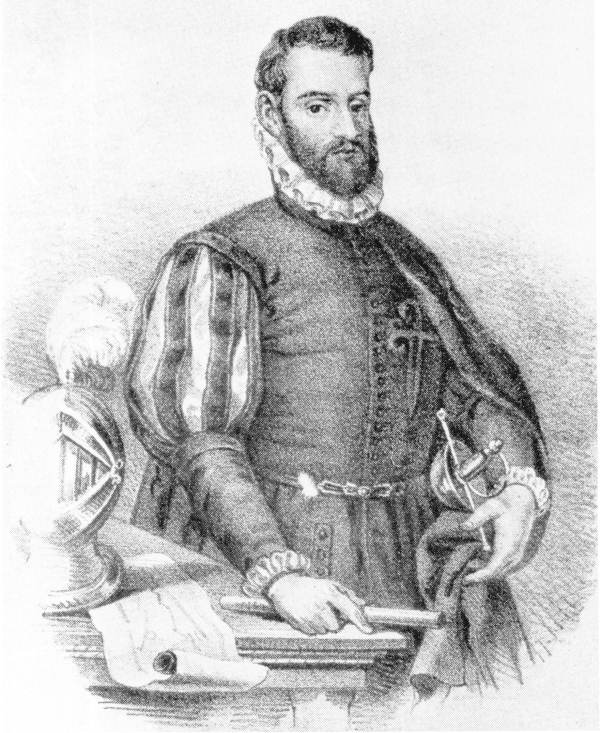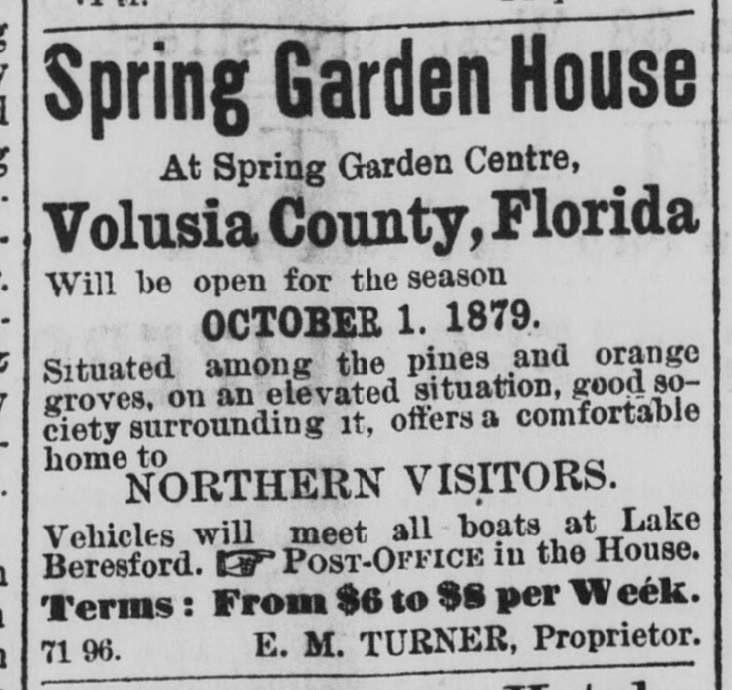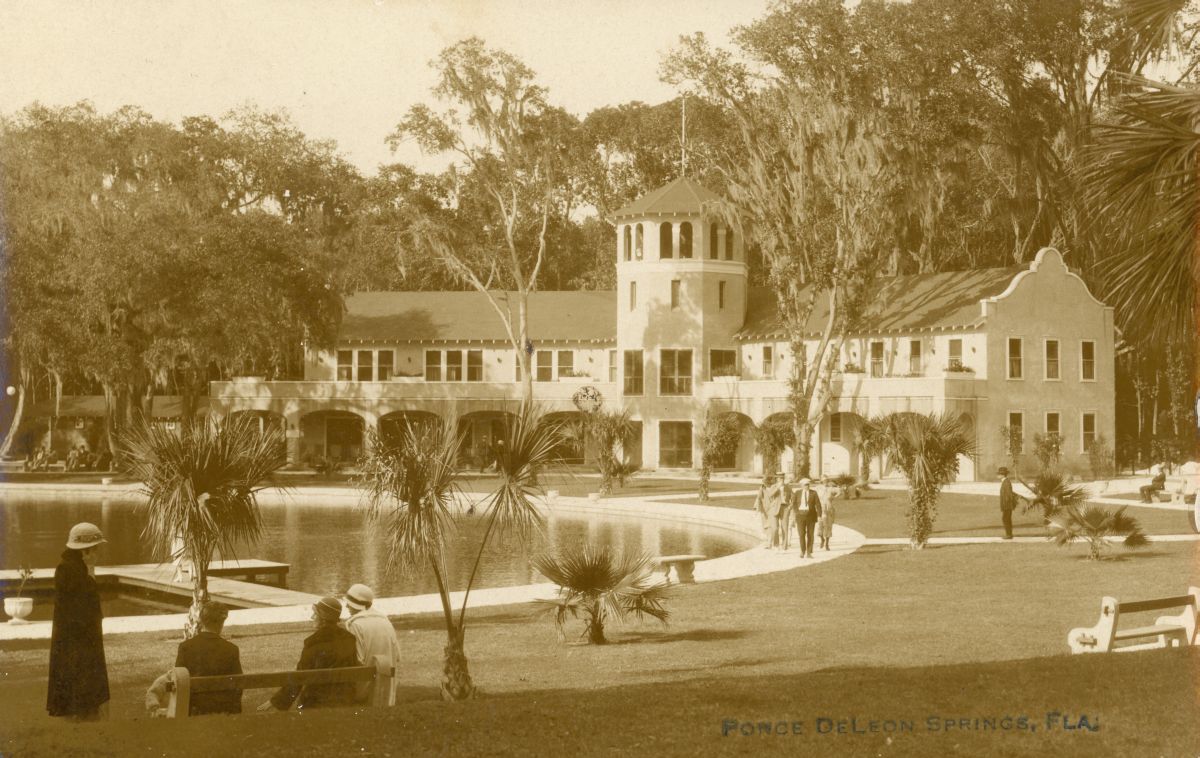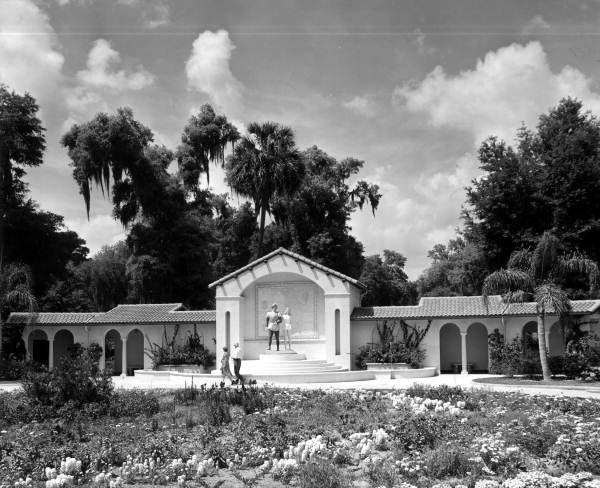Description of previous item
Description of next item
The Fountain of Youth
Published August 8, 2019 by Florida Memory
You’ve probably heard the old saying that truth is stranger than fiction. That could be said of De Leon Springs in Volusia County, which has long been reputed to be the Fountain of Youth that Spanish explorer Juan Ponce de Leon was searching for when he came to Florida in 1513. It turns out this was a bit of creative myth-making–old Ponce never made it quite that far inland. That being said, De Leon Springs is still a naturally beautiful spot with a fascinating past.

Excerpt of a 1985 map published by the Florida Department of Transportation showing the location of De Leon Springs State Park in relation to Orlando, Daytona Beach and Ocala. Click or tap the image to enlarge it.
Evidence suggests that the first Floridians to live near De Leon Springs arrived at least 6,000 years ago. In 1985 and 1990, dugout canoes made of yellow pine and bald cypress were discovered in the spring. Carbon dating confirmed that they came from the Middle Archaic Period (6,000-3,000 B.C.E.), making them two of the oldest watercraft ever found in the Western Hemisphere. Native Americans were still living near the springs when the Spanish arrived in the 16th century, although it wasn’t Ponce de Leon who first encountered them. Pedro Menéndez de Avilés, adelantado of Florida and founder of St. Augustine, led an expedition up the St. Johns River in 1566 and made it within about 10 miles of De Leon Springs. Menéndez had been hoping that the St. Johns connected with Lake Okeechobee, but after a confrontation with the local Mayaca natives he decided to turn back.
There is no evidence to suggest that the Spanish ever settled at De Leon Springs, but it’s clear the area was considered valuable territory. William Panton and Thomas Forbes, British merchants who traded regularly with local Native Americans, both received grants of land surrounding the springs from King George III during Florida’s brief stint as a British province in the late 1700s. This may have been part of a move to drum up some business with the natives still living in the vicinity. One survey plat belonging to William Panton shows a road heading from the springs toward “Panton & Forbes’ Upper Indian Store.”
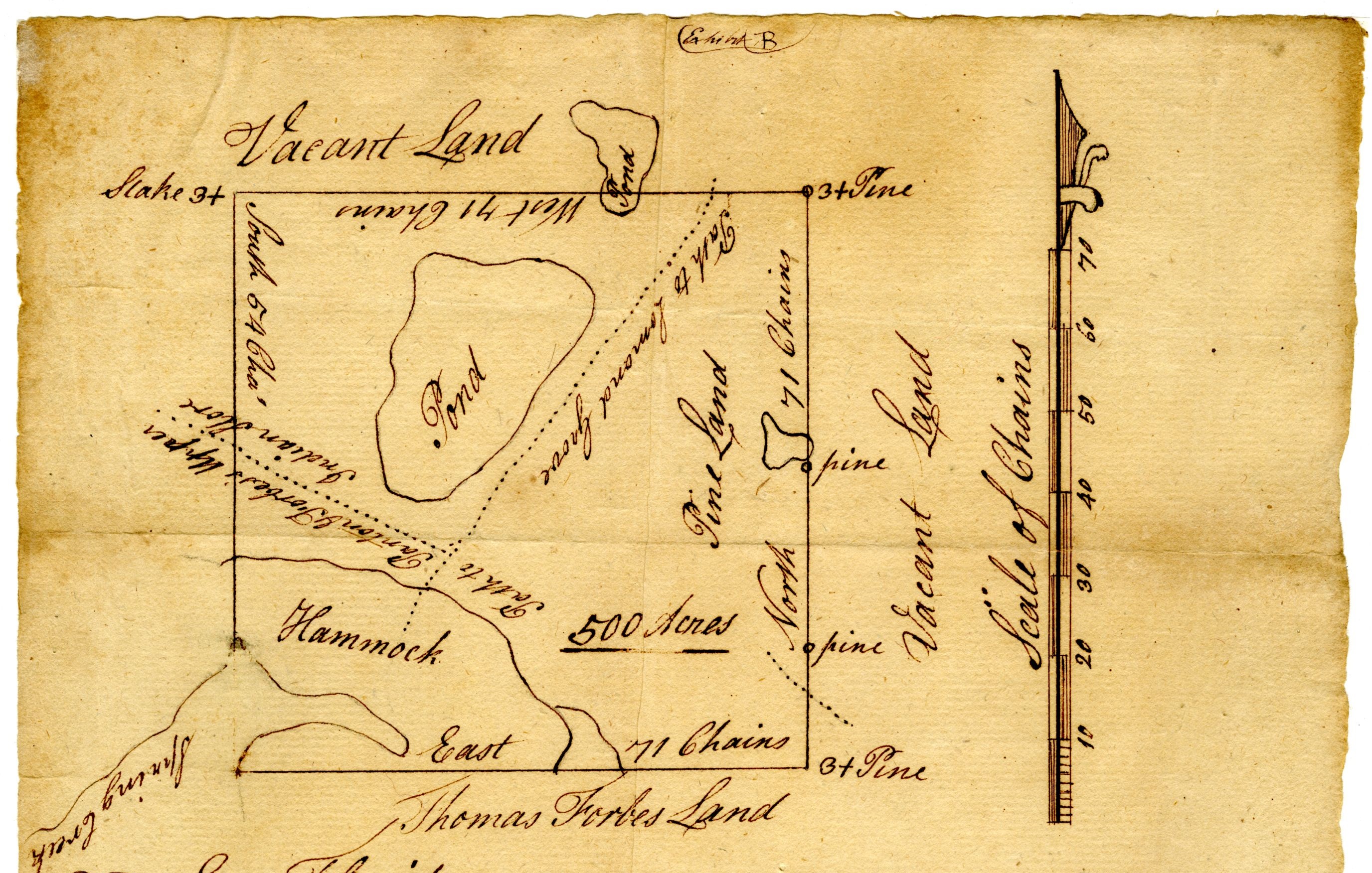
Excerpt of a 1779 survey plat depicting a plot of land near Spring Garden granted to William Panton by the British government. Box 32, Folder 23, Confirmed Spanish Land Grants (Series S990), State Archives of Florida. Click or tap the image to view the full map and the entire land grant dossier.
The two traders seem not to have established anything too permanent at the springs, however, because in 1804 the Spanish granted a 2,020-acre plot of land to William Williams in almost exactly the same spot, with the future De Leon Springs right in the center. William Williams and had emigrated to Spanish Florida with other members of his family from the Bahamas in 1803. William had originally received a land grant at New Smyrna about 26 miles to the southeast, but he found the land unsatisfactory and asked to swap for something better. He called his new possession “Spring Garden,” and established a plantation growing corn, cotton and other crops.
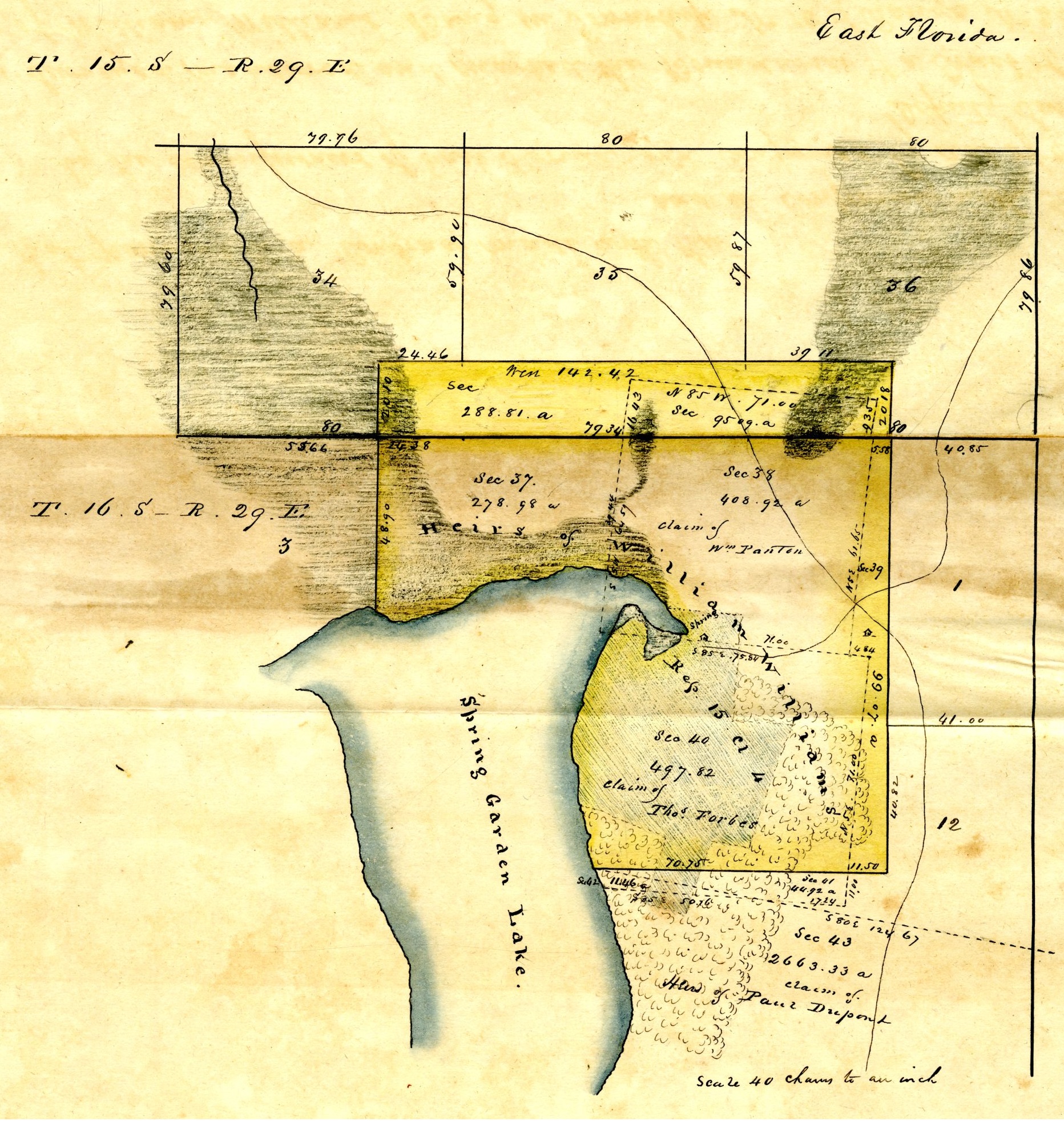
Excerpt of an undated survey plat showing the overlapping land claims of William Williams, William Panton and Thomas Forbes (ca. 1825). Box 34, Folder 7, Confirmed Spanish Land Grants (Series S990), State Archives of Florida. Click or tap the image to view the entire plat and the complete Spanish land grant dossier submitted by the heirs of William Williams.
William Williams died in 1808, and his family later sold the Spring Garden property to Joseph and Jane Woodruff of McIntosh County, Georgia. Woodruff had intended to start growing sugar on the site, but he died before he could get his plan into action. A new owner, Colonel Orlando Rees, decided he too would try his hand at growing sugar cane, and by 1832 his operation was up and running, with a water-powered mill taking advantage of the springs’ rapid flow. An 1834 government survey map shows the location of both the mill (called the “sugar house”) and the Rees family’s home just to the east.
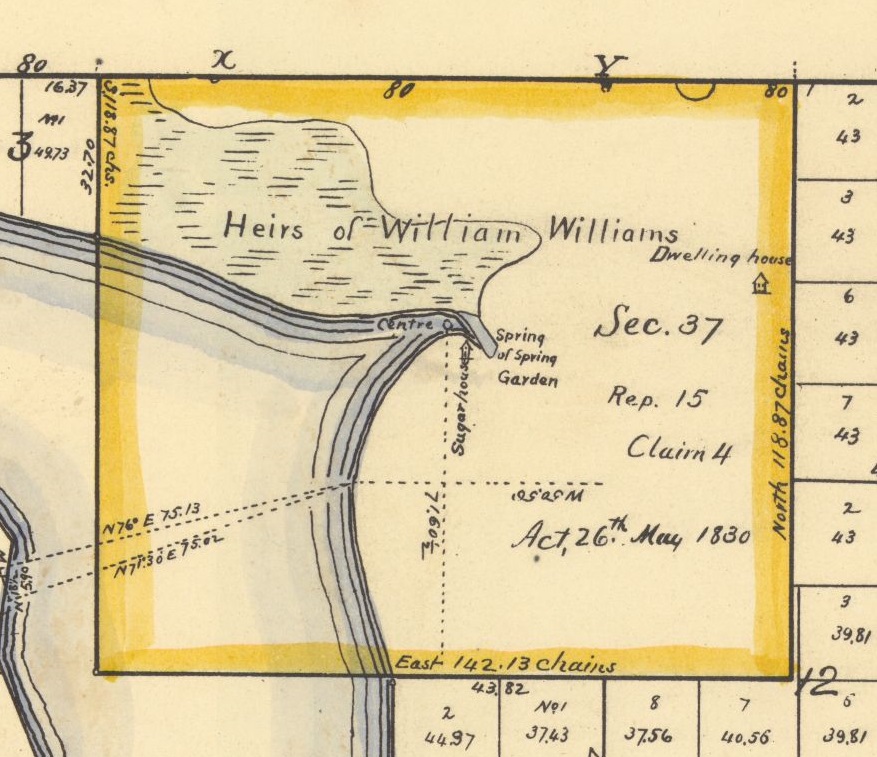
Excerpt of a survey plat showing the location of a sugar mill and dwelling on the property surrounding Spring Garden, later De Leon Springs. The plat was reproduced sometime in the early 20th century from the 1836 original. Box 65, Township Survey Plats (Series S617), State Archives of Florida. Click or tap the image to view the complete map.
The Rees sugar plantation was destroyed at the outbreak of the Second Seminole War in 1835, but a descendant later sold the property to a man named Thomas Starke. In the years leading up to the Civil War, the Starke family rebuilt and enlarged the mill, and during the war they supplied sugar, corn meal and other commodities to the Confederacy. In 1864, Union forces pushed through to the Spring Garden area, hoping to catch the “notorious rebel” Thomas Starke, as U.S. treasury agent A.G. Brown called him. Starke had fled with his slaves and a large supply of corn, but the Union managed to capture 19 bales of Sea Island cotton. They also destroyed the sugar mill and–according to legend–pushed the equipment into the springs.
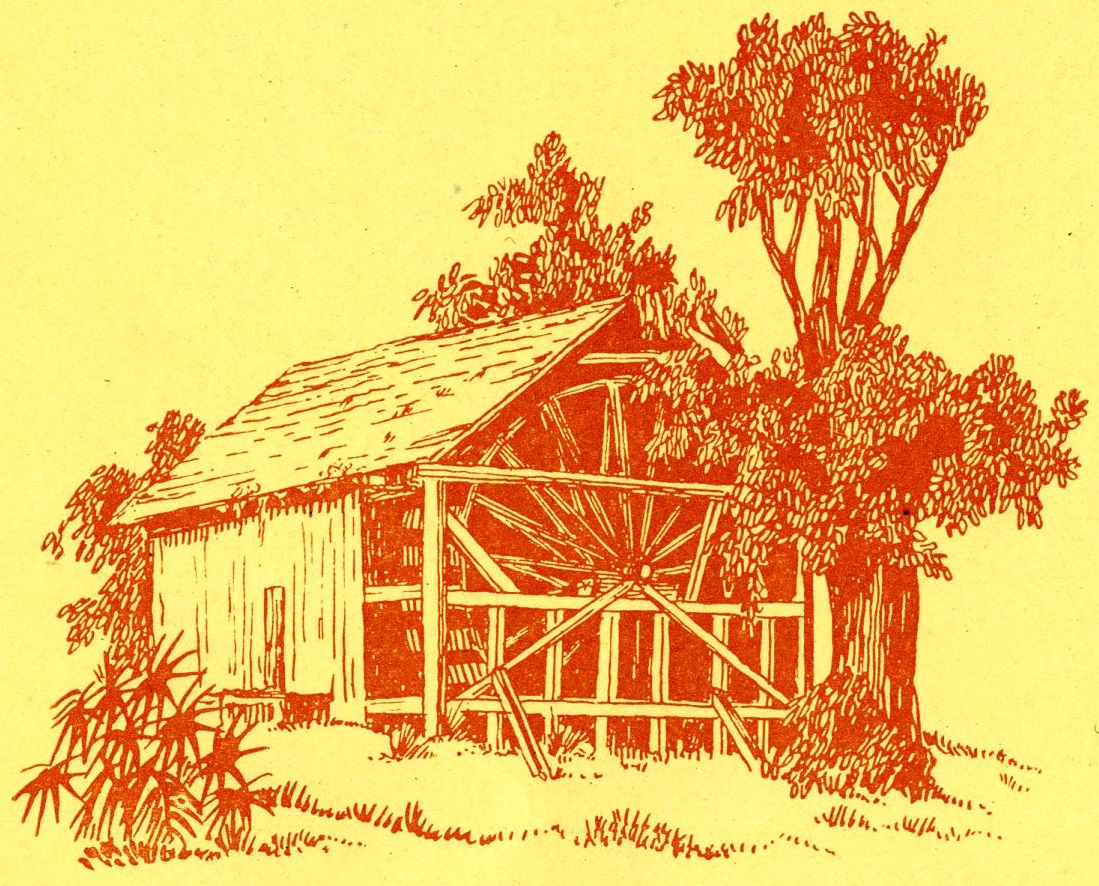
Artist’s rendering of the old sugar mill at Spring Garden, contained in a booklet about the Ponce de Leon Springs Inn (1925). Florida Collection, State Library of Florida.
Spring Garden began a whole new life when Major George Norris of New York purchased the land in 1872. Norris rebuilt the sugar mill and established a successful orange grove. He also built a hotel–the Spring Garden House–and advertised it primarily to northern tourists. At some point in the 1880s, Norris seems to have shifted his focus more toward his booming citrus business and left the business of putting up a good hotel to his brother, Abijah Hart Norris. “Hart,” as he was called, put out newspaper advertisements promising to give “sufficient land” and 10,000 board feet of lumber to “anyone who will put up a good Hotel.”
Around that same time, local leaders decided to establish a new post office called De Leon Springs. The old Spring Garden post office remained in place until 1933; this new office was for the growing village located just south of the spring itself. This was likely the beginning of the effort to identify the spring and the surrounding area with Ponce de Leon’s famous Fountain of Youth.
In 1925, the new owners of the spring, F.N. Conrad of Daytona and C.M. Greiner of Seabreeze, opened up a new hotel and doubled down on the Ponce connection, publishing a booklet extolling the site’s storied past. “Picture, if you can, such a spot with all these modern sources of amusement, with every modern convenience, not detracting in the least from its beauty and from the romance of its historical background,” they gushed. “Picture all this, we say, and you have Ponce de Leon Springs.” The “Florida Boom” hadn’t quite burst just yet at this point, so they did what many other developers were doing around the state–in addition to the hotel they also offered land for homes. A folded map inside their booklet showed the land around Ponce de Leon Springs laid out into lots, plus a golf course and space for farming.
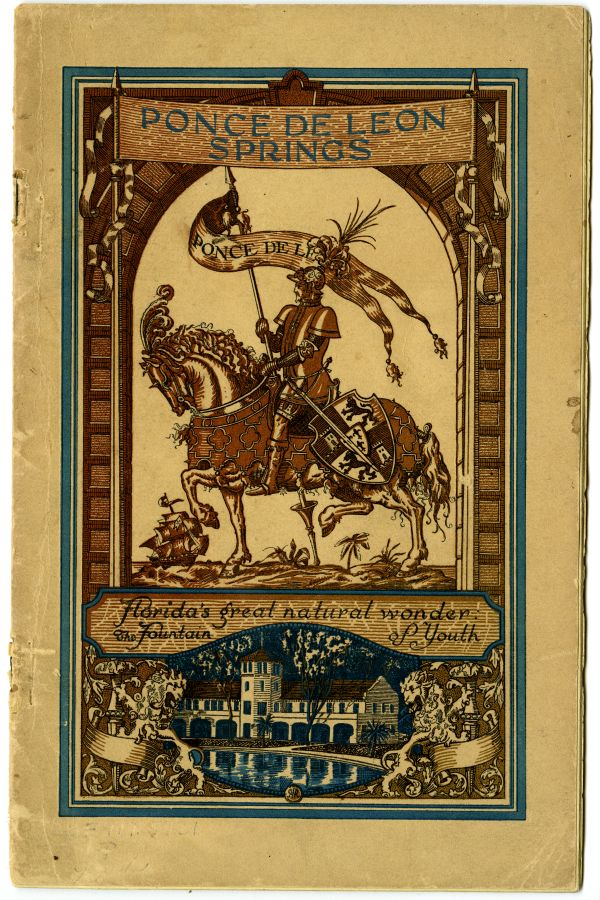
Ponce de Leon Springs: Florida’s Great Natural Wonder, the Fountain of Youth (1925). Florida Collection, State Library of Florida. Click or tap the image to view the entire booklet.
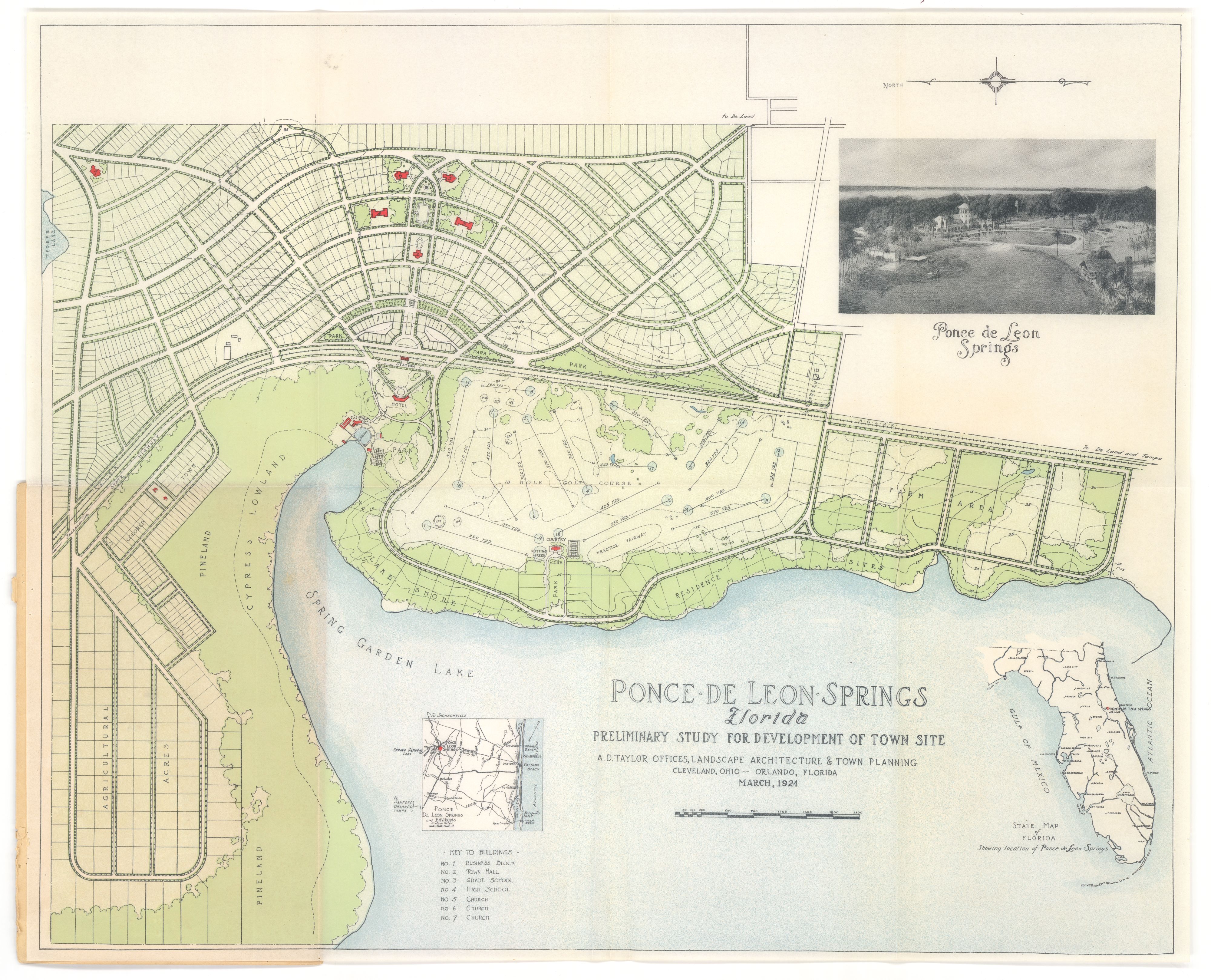
A colored plat map showing the layout of the prospective Ponce de Leon Springs development. Note the golf course, farm, and “colored town” included (Florida Collection, State Library of Florida). Click or tap the image to enlarge it.
The new hotel, the De Leon Springs Inn, closed after a time and the would-be residential paradise surrounding it never quite got off the ground. Still, the springs continued to attract visitors. In June 1953, the springs reopened as a roadside tourist attraction with a zoo, a jungle cruise and even water-skiing elephants. By the 1970s, facing a lag in business as many roadside attractions did in those years, the owners contemplated selling the property to developers. Locals petitioned to have the site turned into a state park instead, and in 1982 Ponce de Leon Springs officially became a part of Florida’s state park system. The focus is a bit more on the cool, refreshing quality of the springs these days rather than their ties to the Fountain of Youth, but there’s still plenty of Florida history to be enjoyed. Stop by next time you’re in the area!
Cite This Article
Chicago Manual of Style
(17th Edition)Florida Memory. "The Fountain of Youth." Floridiana, 2019. https://www.floridamemory.com/items/show/342062.
MLA
(9th Edition)Florida Memory. "The Fountain of Youth." Floridiana, 2019, https://www.floridamemory.com/items/show/342062. Accessed December 24, 2025.
APA
(7th Edition)Florida Memory. (2019, August 8). The Fountain of Youth. Floridiana. Retrieved from https://www.floridamemory.com/items/show/342062

 Listen: The Blues Program
Listen: The Blues Program